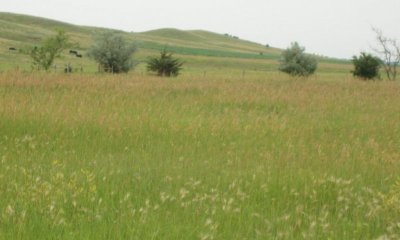
Saline Subirrigated
Scenario model
Current ecosystem state
Select a state
Management practices/drivers
Select a transition or restoration pathway
- Transition T1 More details
- Restoration pathway R2 More details
-
No transition or restoration pathway between the selected states has been described
Target ecosystem state
Select a state
Description
The Reference State represents the natural range of variability that dominates the dynamics of this ecological site (ES). This state is dominated by warm-season grasses. Prior to the European presence in North America, the primary disturbance mechanisms for this site in the Reference condition included periods of below and above average precipitation, periodic fire, and herbivory by insects and large ungulates. Timing of fires and herbivory coupled with weather events dictated the dynamics that occurred within the natural range of variability. In some locations, this site likely received relatively heavy grazing pressure. Tall warm-season grasses would have declined, and shorter-statured grasses and grass-likes would have increased. Today, this state can be found on areas that are properly managed with grazing and/or prescribed burning and sometimes on areas receiving occasional short periods of rest.
Submodel
Description
The Degraded State is characterized by the dominance of the shorter-statured, more saline-tolerant species such as foxtail barley and inland saltgrass, the increased percentage of bare ground, and the increased presence of salt accumulations on the soil surface. Infiltration is reduced, which allows the moisture and the salts carried by the moisture to be wicked up to the soil surface. The short-statured and shallow-rooted species are more capable of withstanding the higher concentrations of salts in the soil surface. As the disturbance level increases, plant density decreases even more, giving way to annual species and invasive perennial species and a further increase in bare ground.
Submodel
Mechanism
Heavy continuous grazing which includes herbivory at moderate to heavy levels at the same time of year each year without adequate recovery periods or a combination of disturbances such as extended periods of below average precipitation coupled with periodic or chronic heavy grazing will shift this community to the 2.1 Foxtail Barley/Inland Saltgrass, Bare Ground Plant Community Phase within the Degraded State (State 2).
Encroachment of non-native invasive/noxious species, abandonment of cropping, or seeding of introduced and/or native improved varieties of forage species may lead this plant community phase over a threshold to the Degraded State (State 2) and more specifically to the 2.2 Annual/Pioneer, Non-native Perennial, Bare Ground Plant Community Phase. In the case of a seeding, refer to the corresponding Forage Suitability Group (FSG) description for adapted species and expected production (production estimates in the FSG description may be unrealistically high due to the degraded condition of the site at this phase).
Mechanism
Long-term prescribed grazing (moderate stocking levels coupled with adequate recovery periods, or other grazing systems such as high-density, low-frequency intended to treat specific species dominance, or periodic light to moderate stocking levels possibly including periodic rest) may lead this plant community phase over a threshold to the Reference State (State 1). Wetland restoration techniques may be necessary to restore biotic integrity and plant diversity and productivity.
Relevant conservation practices
| Practice | External resources |
|---|---|
|
Prescribed Grazing |
Model keys
Briefcase
Add ecological sites and Major Land Resource Areas to your briefcase by clicking on the briefcase (![]() ) icon wherever it occurs. Drag and drop items to reorder. Cookies are used to store briefcase items between browsing sessions. Because of this, the number of items that can be added to your briefcase is limited, and briefcase items added on one device and browser cannot be accessed from another device or browser. Users who do not wish to place cookies on their devices should not use the briefcase tool. Briefcase cookies serve no other purpose than described here and are deleted whenever browsing history is cleared.
) icon wherever it occurs. Drag and drop items to reorder. Cookies are used to store briefcase items between browsing sessions. Because of this, the number of items that can be added to your briefcase is limited, and briefcase items added on one device and browser cannot be accessed from another device or browser. Users who do not wish to place cookies on their devices should not use the briefcase tool. Briefcase cookies serve no other purpose than described here and are deleted whenever browsing history is cleared.
Ecological sites
Major Land Resource Areas
The Ecosystem Dynamics Interpretive Tool is an information system framework developed by the USDA-ARS Jornada Experimental Range, USDA Natural Resources Conservation Service, and New Mexico State University.
